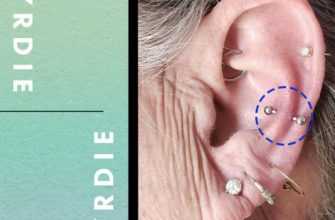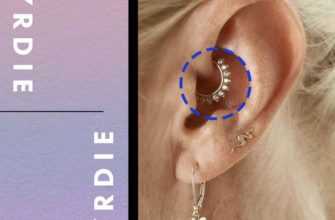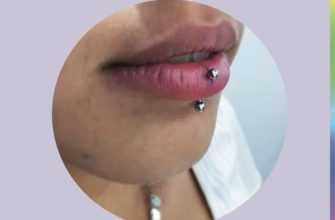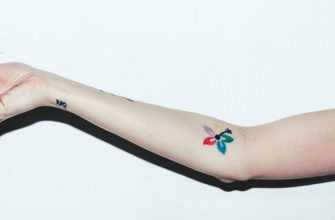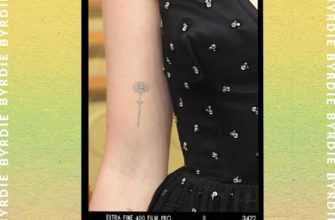A tongue piercing is as straightforward as it sounds: It’s a hole pierced through the tongue in some form and kept open with a piece of jewelry. The typical tongue piercing is a singular vertical piercing in the center of the tongue, but there are a handful of different kinds if you’d rather get something more unique.
This type of piercing had a huge following in the 1990s and early 2000s, and though they’re not as popular anymore, tongue piercings are once again gaining steam. Thanks to their hidden nature, tongue piercings are a fun piercing that you can make visible when you want to (or when you speak) but otherwise keep to yourself as much as you’d like.
Tongue piercings may seem daunting if you’ve never gotten an oral piercing, but the aftercare is straightforward and typically the same for every kind. Most are ready to change in three to four weeks, for one. In fact, Felix Yeld of Tiger Moon Body Piercing says that you should downsize your jewelry once your piercing is healed, though be careful not to remove the jewelry it was pierced with until you’re certain the piercing is healed—otherwise, you risk the hole closing up.
“It’s highly recommended that you change the bar once completely healed, preferably with acrylic or softer balls, as playing with or biting the steel bar or balls can damage your teeth,” says Yeld. Switching out your jewelry will also help you avoid short- and long-term gum and tooth decay, says Jess Rose, a piercer at Matchless Tattoo.
In terms of keeping a tongue piercing clean, Rose says to rinse oral piercings with an alcohol-free mouthwash after all meals for two to four weeks. (And if you can’t stop smoking during the healing period, rinse after you smoke, too.)
During the healing period, be sure to avoid spicy foods, extremely chewy food, and dairy products in order to prevent irritating the piercing. Also, try to avoid smoking, drinking strong alcohol, or really any activity that you’d use your tongue for (but you’re welcome to speak, of course). If you find the inflammation is hindering typical tongue use, try an oral anti-inflammatory or natural remedies like sucking on ice or a lollipop.
If you’re contemplating getting a tongue piercing of some sort but aren’t quite familiar with the ins and outs of each kind, we’ve got you covered. Here’s everything you need to know about each type of tongue piercing to help you make the most informed—and overall best!—decision for yourself.
Vertical/Midline Tongue Piercing
The vertical tongue piercing, also called a midline tongue piercing, is the traditional single tongue piercing you may think of. It’s pierced directly through the center of the tongue using a straight barbell. This type of tongue piercing typically takes around four to six weeks to heal, though it will depend on your anatomy and body health. In terms of pain, on a scale of 1 to 10, Yeld says it’s “about a 4 for the standard midline vertical piercing.”
While vertical tongue piercings are popular, it’s important to talk to your piercer before going for it. Tongue piercings are based on anatomy, and it’s possible your tongue may not be suitable for even the simplest piercing. “Not all people can do the standard tongue piercing, depending on length, vein placement, and shape,” says Yeld.
Horizontal Piercing
Horizontal tongue piercings are characterized by a single piercing passing through the tip of the tongue horizontally. These piercings are also sometimes called snake eye piercings or scoop piercing. Despite their fun names, these piercings are anything but, and they’re regarded as off-limits by piercers. If you were to get one (which, again, is frowned upon), it would be about an 8 on the pain scale.
“No reputable piercer will do horizontal (‘scoop’) or snake eye piercings,” says Rose. “There are multiple muscles encased in the tongue. By piercing sideways through two muscles, it’s not safe or viable.”
It’s also important to note that horizontal tongue piercings can easily cause enamel and gum erosion, as the jewelry rubs the roof of the mouth. It “will create a bigger dentist bill than the piercing is worth in the long term,” says Rose.
Frenulum Linguae
The frenulum linguae may sound like a “Harry Potter” spell more than a tongue piercing, but it’s actually a piercing that runs through the webbing underneath your tongue that connects it to the floor of your mouth. This type of piercing is typically done with a curved barbell or captive bead ring, according to Rose.
“I have only done two in my 10-year career, because most people do not have enough ‘webbing’ or [the] proper anatomy to successfully support and heal the piercing,” says Rose.
If you’re set on getting a frenulum linguae piercing, make sure you find an experienced piercer who can make sure your tongue will be able to support it. It’s also important to find a piercing artist who knows what they’re doing, as it’s necessary to avoid salivary glands when getting a frenulum linguae piercing.
“I see way too many pierced incorrectly,” says Rose.
If you decide to get one, know that it will take about two to three months to heal and will be a 6 or 7 out of 10 for pain—maybe even more, as the frenulum linguae is thin and fragile.
Side/Venom Piercing
A side piercing is a vertical tongue piercing placed on either side of the tongue’s midline. However, when you get two side piercings—one on each side of the midline—they then become a venom piercing. They’re also sometimes called frog eye piercings for their similarity to the way a frog’s eyes sit on top of its head. Painwise, expect it to be the same as a typical midline piercing—not too bad at all.
“The piercing itself is not that painful,” says Yeld. “However, the healing period can be fairly uncomfortable. The tongue will be swollen anywhere from three days to two weeks.”
Because this piercing requires two insertions, be sure to talk with an experienced piercer before getting it done, to ensure your tongue is correct for it and that your body will be able to handle two piercings at once.


